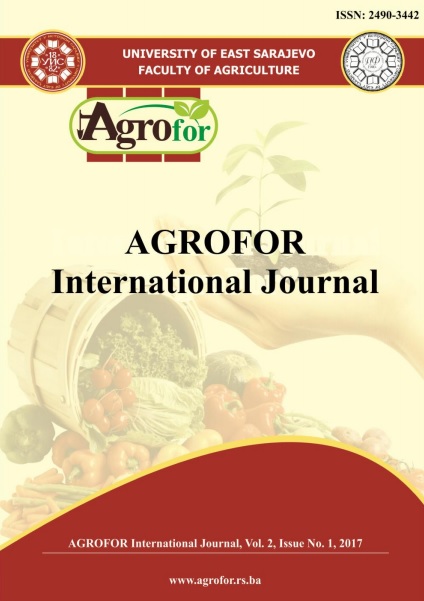PRE-SOWING SEED INOCULATION IN THE BIRDSFOOT TREFOIL SEED PRODUCTION
DOI:
https://doi.org/10.7251/AGRENG1701041SAbstract
A prerequisite for the improvement of birdsfoot trefoilproduction is the production
of sufficient quantities of good quality seeds. The aim of the study was to analyze
the impact of the seed inoculation with mesorhizobial bacteria on yield and yield
components of birdsfoot trefoil seed (Lotus corniculatus L. ). In experiment
birdsfoot trefoil cultivars Zora, K-37 and Rocco, and two strains of Mesorhizobium
loti were used. A trial was carried out in spring 2012 on a private estate in the
village of Ivanovci near Ljig (Serbia) and were set up on brown forest soil type,
using a randomized block design with three replications and plot size of 5 m
(5x1m). Seed inoculation was performed immediately before sowing. Sowing was
carried out at a distance of 20 cm row spacing with the amount of seed of 10 kg ha-
. Irrespective of inoculation, cultivars significantly differed in terms of the number
of stems m-. Two-factorial experiment showed significant influence of M. loti
strains as well as interaction between the strains and the cultivars on seed yield and
yield components investigated (with exemption on seed number per pod). Generally,
both strains of M. loti have had a positive impact on yield components and
seed yield of the birdsfoot trefoil cultivars. Inoculation of seeds has significantly
influenced the increase ofthousand seeds weight in the cultivar Rocco, number of
stems m- and seed yield of cultivars Zora and Rocco.

